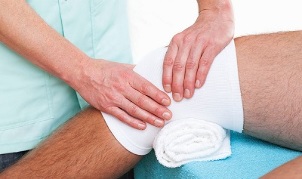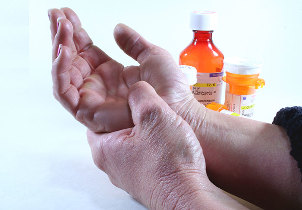The most common joint diseases are arthritis and osteoarthritis. The two diseases have many differences, on which the outcome of the disease largely depends. The correct definition of the disease by a specialist doctor is key to effective treatment for the full recovery of the affected joints. Under the influence of age-related changes, every person is at risk of pathological changes in the joints. The joints, which are exposed to increased stress throughout life, are particularly affected. Disease can be a direct cause of joint changes. To avoid the undesirable consequences of joint disease, it is necessary to prevent the disease from developing and to follow preventive and treatment measures.
The main differences between arthritis and osteoarthritis
Joint pathologies: Arthritis and osteoarthritis have a negative effect on the patient's quality of life. The disease-causing process in the joint causes pain and restricted mobility. Both diseases lead to destructive changes in the structure of the joints, but differ in the nature of the origin and the course of the disease.
Arthritis, if we compare it to osteoarthritis, is an acute or chronic inflammatory pathology of the joints that can occur in infections or diseases of an autoimmune nature, becomes a complication after an injury and also occurs in allergic reactions.

Single and multiple joints are affected. In addition, the inflammatory process spreads throughout the body and involves internal organs in the process.
Osteoarthritis is a process of cartilage modification that leads to the destruction of the joints up to a complete loss of movement like arthritis. A pathological process develops in view of age-related changes in the tissues of the joint, which are aggravated by the patient's excess weight, metabolic disorders and pathologies of the endocrine system.
The causes of arthritis and osteoarthritis differ considerably. The only unifying factor is the similarity of some symptoms and the unfortunate result of untreated forms.
Arthritis trigger:
- Development of inflammation of the articular tissue of the knee after various types of trauma;
- infection of the knee joint with viral, fungal and bacterial etiology;
- severe allergies;
- prolonged exposure to cold air;
- lack of vitamins and minerals;
- hereditary predisposition.
The onset of osteoarthritis differs from arthritis in that changes inevitably occur in every person with age. Knowing the etiology of the disease, it is possible from a young age to adjust the diet and lifestyle to prevent pathology.
Development takes place under the following conditions:
- Wear of the joint components is caused by aging;
- increased body weight significantly increases the daily stress on the knees;
- deformation disorders due to injuries;
- malnutrition;
- Osteoarthritis can be a complication of the arthritis, or rather inflammation, that is present in the disease;
- autoimmune pathologies of unexplained etiology;
- congenital pathologies related to joints;
- violation of trophism and blood supply to the joint;
- malfunction of the thyroid gland;
- changes in hormone levels;
- polluted environment.
Difference functions
These two diseases sound similar, but they differ in many ways. In the young population, up to forty years old, arthritis is more common, and the destructive processes of cartilage tissue affect the elderly. The older the person, the higher the risk of disease.
Osteoarthritis is a disease that is mainly localized in the joints without spreading to the surrounding organs and tissues. Arthritis can be one of the manifestations of a more serious disease that involves the entire body in the inflammatory process. Both diseases can occur in acute and chronic form, only osteoarthritis develops longer and can lead to the complete destruction of the joints.
Arthritis has lighter symptoms, accompanied by external manifestations that are characteristic of inflammation: hyperemia in the area of localization of the process, severe swelling, hot skin in the area of the affected joint, pain syndrome. The osteoarthritis runs more smoothly without spreading beyond the joint.
In contrast to osteoarthritis, arthritis mostly affects small joints: hands, feet, wrists and ankles. The disease rarely affects one joint, polyarthritis is a more common form, and osteoarthritis is localized in large joints.
According to statistics, middle-aged men are more likely to develop joint pathology due to infection and viruses. Processes that deform joints are most common in the female population during menopause, mainly after the age of 50. Children can also be exposed to joint damage, especially juvenile arthritis is considered dangerous, which can lead to limitations.
Signs of manifestation
It is important to see a doctor at the first symptoms in order to successfully heal and restore the joints for optimal motor activity. Arthritis and osteoarthritis differ significantly in the initial period of the disease. The inflammation is manifested in the severity of the symptoms, where it is easy not to miss the initial process.
Dystrophic changes in joint tissue are poorly manifested in the early stages, so patients often come to an orthopedic surgeon when the disease is in the second or third stage of development. In this case, treatment is complicated, takes a long time and requires a lot of measures to restore the normal functionality of the joints. A sluggish process is difficult to diagnose on its own, but for any manifestation of discomfort in the joint, you just need to go to the doctor's office so as not to miss the initial stage of the disease.
How does arthritis manifest itself?
- In contrast to osteoarthritis, swelling occurs around the inflamed joint in arthritis, which hinders movement and causes a lot of discomfort when moving independently.
- In case of acute inflammation, the skin on the joint becomes brightly hyperemic and feels hot.
- When arthritis is the type caused by an infection. The general condition of the patient suffers, intoxication begins, which is accompanied by a febrile state.
- A sharp pain occurs in the inflamed joints, which tends to increase significantly with movement. In a calm state, the pain syndrome does not subside, but pulsates.
- In most cases, arthritis is accompanied by a general worsening of the condition, weakness occurs, and chronic diseases worsen.
- The joints of the fingers and toes, as well as the knuckles and hand, are most vulnerable.
Arthritis symptoms
The manifestations of osteoarthritis have no characteristic signs in the first few years of the disease, the wear and tear of the joint becomes noticeable after several stages of the development of the pathological condition.
Signs of osteoarthritis:
- pain does not appear immediately, the pain increases as the condition of the joint worsens;
- in the absence of movement there is no pain, the pain syndrome begins to develop upon activation;
- with damage to the hip or knee joint - the gait becomes slack and the range of motion is incomplete;
- under neglected conditions there may be a shortening of the lower extremity, if not corrected, then pathologies of the spine develop;
- When the cartilage tissue is destroyed, the joint loses its mobility and the joint is completely blocked.
- pronounced crepitus in the joint during physical activity.
How are diseases treated?

Arthritis and osteoarthritis differ significantly in the treatment approach. Various causes and mechanisms for the development of pathology suggest the initial setting of the correct diagnosis in order for therapeutic measures to be effective.
In order not to provoke the disease and waste valuable time, do not rely on the experience of friends and folk recipes.
Disease processes that have a negative effect on the joints should not be allowed to flow. It is important to feel the joy of exercise at any age, not only well-being, but also a person's quality of life depends on it.
Treat arthritis
Treatment should begin with identifying the factors causing the inflammation. Having determined the nature of the origin of the disease, drugs are prescribed that destroy the causative agent of pathology. With exposure to pathogenic bacteria, the patient is prescribed antibiotics, which are prescribed in the form of tablets or injections, depending on the severity of the intoxication. Viral lesions are treated with antiviral pills.
The basis for effective removal of inflammation and pain suppression is the mandatory use of nonsteroidal anti-inflammatory drugs. They will help manage unwanted symptoms, both from taking pills and local effects on the area of the diseased joint.
Strengthening the immune system is the basis for successful disease control. The intake of multivitamins with micronutrients supports a weakened body and helps to steer the course of the disease towards recovery. In addition to synthetic complexes, natural sources of vitamins are also useful - berries, fruits, vegetables.
Adequate nutrition and a special diet are indicated for patients with arthritis as well as with osteoarthritis. Allowed products are fermented dairy products, lean meat, fish, vegetables and herbs. You need to avoid strong coffee and black tea, carbonated and alcoholic drinks.
Physiotherapy exercises and physiotherapy procedures in combination with the main therapy give excellent results: treatment with a magnetic pulse field, radon baths, electrophoresis and other methods. The list of special exercises is drawn up by a physiotherapist, under whose supervision the load is carried out.
We treat osteoarthritis
The disease is slow to develop and has a radically different treatment that should aim to restore the cartilage tissue of the joint. The real salvation will be the use of chondroprotectors, which, with prolonged use and following the doctor's recommendations, can prevent the progression of destructive changes and restore damaged cells.
Chondroprotectors support tissue nutrition and promote cartilage repair and the production of synovial fluid, which serves as the sole source of nutrition for the joint components.
If pain occurs, NSAIDs are recommended for the symptomatic management of pain. A fortified diet, quitting alcohol, and smoking all lead to an increase in the body's resistance and strength to fight for healthy joints.
Therapeutic gymnastics with various methods increases blood flow in the affected area, moves the joints and increases trophism. Traditional recipes that have been tested over the years are useful as an additional method of alternative medicine.
In the final stages of osteoarthritis and arthritis, the only solution is surgical treatment of the joint capsule. The most common method used is cartilage transplantation, which is used to restore mobility to the affected joint.
How do I define a disease?
In order to determine exactly which disease is occurring in the joints, you need to make an appointment with an experienced orthopedic surgeon. At the first meeting, the doctor will conduct a visual examination and ask interesting questions to get a picture of the disease.
The results of laboratory blood tests will help differentiate arthritis from osteoarthritis. This requires general and biochemical testing. The X-ray examination helps to examine the joint in detail from the inside.
With some pathologies, the patient is referred for a magnetic resonance examination, which provides answers to the doctor's questions about the diagnosis of the pathology. After collecting all the results, a diagnosis is made, which will serve as the basis for prescribing treatment.
Preventive measures
To keep your joints healthy, a healthy lifestyle is required. Proper diet and regular exercise will extend the life of your joints, which is important for overall health.
With the slightest manifestation of osteoarthritis or arthritis, you should under no circumstances be treated yourself. Inappropriate actions can negatively affect the outcome of the disease. Timely referral to a specialist and continued adherence to appointments guarantee successful treatment, which makes it possible to lead a healthy lifestyle.







































